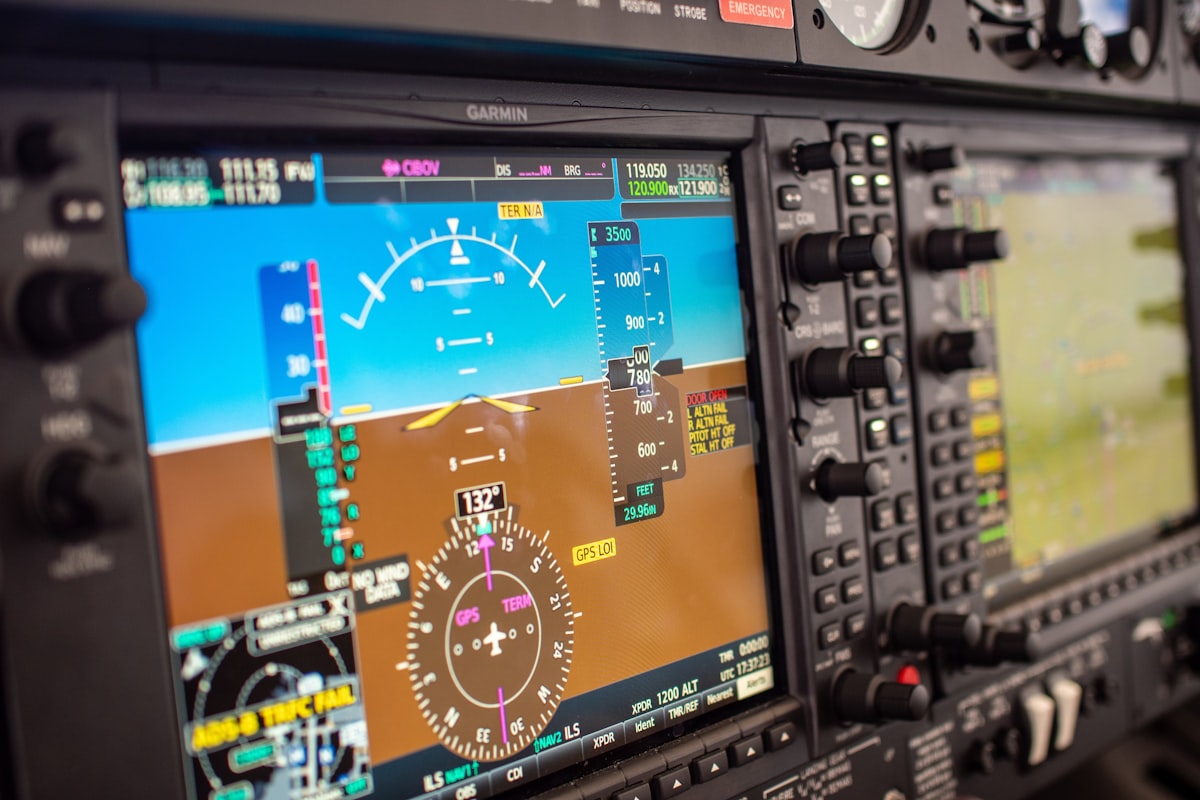F-35 Weapons Bay
F-35 Weapons Bay
The F-35 Lightning II is a multi-role fighter aircraft developed by Lockheed Martin. One of its most notable features is the weapons bay. This internal compartment is designed to house a variety of weapons while maintaining the aircraft’s stealth capabilities.

Design and Structure
The F-35’s internal weapons bay allows it to carry its arsenal without compromising stealth. The doors of the weapons bay are designed to open and close quickly, minimizing radar signature exposure. The compartment has the space for a combination of missiles, bombs, and other equipment.
Size and Capacity
The F-35’s weapons bay can carry up to 5,700 pounds of ordnance. It can accommodate a range of weapons, from shorter-range air-to-air missiles to larger guided bombs. This flexibility allows the F-35 to engage in a variety of mission profiles.
Configuration Variants
The F-35 is available in three variants: the F-35A, F-35B, and F-35C. Each has slightly different weapons bay configurations, tailored to their specific operational roles. The F-35A is for the Air Force, the F-35B for the Marine Corps, and the F-35C for the Navy.
Weapon Integration
Integrating weapons into the F-35’s bay involves careful planning and engineering. The bay is equipped with launchers and racks that hold and release the weapons as needed. These mechanisms ensure that weapons are deployed swiftly and reliably.
Air-to-Air Missiles
The F-35 can carry AIM-120 AMRAAM and AIM-9X Sidewinder missiles for air-to-air combat. The AIM-120 is a beyond-visual-range missile, while the AIM-9X is a short-range missile. These options provide the F-35 with versatility in aerial engagements.
Air-to-Ground Munitions
For air-to-ground missions, the F-35 can be armed with various types of bombs including the GBU-12 Paveway II, GBU-31 JDAM, and Small Diameter Bombs. These precision-guided munitions enable the F-35 to carry out pinpoint strikes on ground targets.
Anti-Ship Missiles
The integration of anti-ship missiles such as the AGM-158C LRASM extends the F-35’s capabilities to maritime strike missions. This means the F-35 can engage surface ships while maintaining a low radar profile.
Stealth and Performance
One of the primary benefits of the internal weapons bay is that it preserves the aircraft’s stealth profile. External mounting points can disrupt the radar-absorbing contours. By housing weapons internally, the F-35 minimizes its radar cross-section, making it harder to detect.
Low Observable Technology
The weapons bay doors are covered with radar-absorbing materials. This technology contributes to the overall stealth of the aircraft. The quick action of the doors is synchronized with the release of the weapons, thereby limiting the duration of exposure.
Thermal Signatures
In addition to radar, the F-35’s design considers thermal signatures. The internal carriage of weapons reduces potential thermal hot spots which infrared sensors could detect. This attention to detail ensures the F-35 remains elusive to various detection methods.
Operational Scenarios
Different mission scenarios take advantage of the F-35’s weapons bay capabilities. In air superiority missions, the emphasis is on carrying air-to-air missiles. In ground attack missions, the bay is configured to hold bombs and air-to-ground missiles. This flexibility is a key part of the F-35’s design.
Combat Air Patrol
During combat air patrol, the F-35 can carry a mix of short and long-range air-to-air missiles. The internal bay allows the aircraft to patrol with stealth, ready to engage targets at various distances. This ensures dominance in aerial engagements.
Ground Attack Missions
For ground attack, the bay is loaded with guided bombs and missiles. The precision of these armaments allows the F-35 to strike with minimal collateral damage. The ability to house these weapons internally means the aircraft can approach targets undetected.
Anti-Ship Operations
In maritime settings, the F-35 can arm itself with anti-ship missiles. The internal bay ensures the aircraft remains stealthy while approaching naval targets. The design allows for effective surprise attacks on surface vessels.
Technological Advancements
The F-35’s weapons bay benefits from cutting-edge technology. This includes advancements in launcher design, thermal management, and stealth. These technologies enhance the aircraft’s combat effectiveness and survivability.
Launcher Innovations
Modern launchers in the weapons bay are designed for reliability and speed. They can hold and release various types of weapons efficiently. This is crucial for maintaining readiness and performance during rapid deployments.
Thermal Management Systems
To manage heat emissions, the F-35 incorporates advanced cooling mechanisms. These systems ensure that neither the weapons bay nor the stored munitions generate excessive heat. This reduces the risk of detection by thermal sensors.
Stealth Enhancements
Continual improvements in stealth technology ensure that the F-35 remains at the cutting edge. Updates to the radar-absorbing materials and high-speed door mechanisms help in maintaining the aircraft’s low observable profile.
Maintenance and Upgrades
Maintaining the weapons bay involves regular checks and servicing. The bay’s components need to be in top condition to ensure flawless operation. Upgrades are also periodically implemented to incorporate new technologies and weapon systems.
Routine Checks
Maintenance crews conduct routine inspections of the weapons bay. These checks ensure the launchers and doors function smoothly. Any wear or damage is addressed promptly to maintain operational readiness.
Software Updates
The electronics and software governing the weapons bay receive updates. These updates may include enhancements for better integration with new weapons. Keeping the software current ensures the aircraft can handle future combat scenarios.
Retrofits and Enhancements
Sometimes, the physical components of the weapons bay are upgraded. This could involve adding new types of launchers or improved thermal insulation. Such retrofits ensure the F-35 remains capable of utilizing the latest in military technology.
Global Deployment
The F-35 is deployed by multiple countries around the world. Each user might have different preferences for weapons loadouts in the bay. This adaptability highlights the versatility of the F-35’s design.
Allied Forces
Countries like the United Kingdom, Australia, and Japan deploy the F-35. Each of these nations configures the weapons bay to meet their specific defense needs. This could involve different combinations of air-to-air and air-to-ground munitions.
NATO Missions
As part of NATO, the F-35 plays a crucial role in collective defense. The weapons bay allows for quick reconfiguration to meet mission needs. Whether for air defense or ground support, the F-35 can adapt rapidly.
Future Prospects
Looking ahead, the F-35’s weapons bay will likely see new developments. Emerging technologies and new weapon systems will continue to enhance its capabilities. This ensures the F-35 remains a formidable asset in modern warfare.
Integration with New Weapons
Future weapons such as directed energy weapons or next-generation missiles may be integrated into the bay. This will require advancements in launch mechanisms and space management within the bay.
Enhanced Stealth Features
Ongoing research into stealth technology will benefit the F-35. Improvements in radar-absorbing materials and thermal management will likely be realized. These enhancements will keep the aircraft competitive in a constantly evolving threat environment.
Artificial Intelligence and Automation
Integration of AI and automation in the weapons bay could streamline operations. These advancements could improve the speed and reliability of weapon deployment. They might also enable more complex mission profiles with less human intervention.
Recommended Aviation Gear
David Clark H10-13.4 Aviation Headset – $376.95
The industry standard for aviation headsets.
Pilots Handbook of Aeronautical Knowledge – $25.42
Essential FAA handbook for every pilot.
As an Amazon Associate, we earn from qualifying purchases.




Subscribe for Updates
Get the latest articles delivered to your inbox.
We respect your privacy. Unsubscribe anytime.